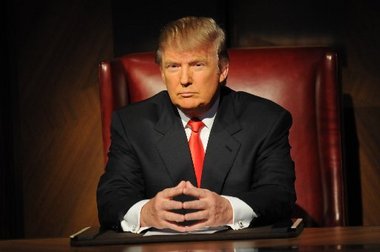Last week at the annual meeting of the Association for the Study of Higher Education (ASHE), my research assistant and I presented a project that we’ve been working on for over a year now. The study, Exploring Involuntary Presidential Turnover in American Higher Education, asks a simple question: Why do college presidents get fired? For today’s post, I want to share some of the more interesting findings of what we discovered.

For our sample, we examined all of the universities that play Division I athletics as these institutions are some of the most scrutinized and complex institutions in American higher education. We were able to collect data on 256 universities and 927 presidential terms of office. The data represent 6,400 presidential years of service.
Of the 927 presidents in our study, 61 were forced out of office by an involuntary turnover (what we characterized as presidents that were forced to resign or terminated). At private universities, 5% of presidents left for involuntary reasons while 10% of public universities were victims of involuntary turnover.
When we looked at the causes of the turnovers, we identified 8 primary causes: loss of board confidence, financial impropriety, athletics scandal, personal/integrity issues, loss of faculty confidence, loss of system confidence, sexual misconduct, and poor fit.
One of the remarkable aspects of this data is how the causes varied by control (public vs. private institutions). Twenty-seven percent of public university presidents ran into problems with board confidence while no private university presidents faced this challenge. Forty percent of private university presidents were removed due to a loss of faculty confidence compared to only 8% of their public counterparts.
There has been much discussion in recent years regarding the increased complexity and difficulty in the role of the presidency. Often the length of the term of a president is cited as cone of the examples of this fact. However, our research suggests that involuntary turnover may be a better judge.
During the time period of our study, the length of time that presidents serve is almost identical. However, the number of involuntary turnovers have risen dramatically.
Four of the five years with the highest involuntary turnover have been since 2008. Nearly half of all involuntary turnovers have happened during this time. While the economy no doubt played a role in this trend, nearly every category increased suggesting that the pressures extend beyond the recession.
The findings of our study as well as our overall understanding about the complexity of today’s presidency suggest that campuses would benefit from additional awareness about the challenges facing college presidents. In particular, presidents may face unique problems in their first two years of office that present particular danger for a successful tenure (we found nearly one-third of presidents don’t make it past the first two years).
Increased awareness of the trends and causes of involuntary turnover should also help colleges currently seeking new presidents better anticipate problems and attempt to proactively respond to any difficulties before they become irreparable.
This hits many of the high points of what we found, but I would be happy to share the conference paper if you’re interested in learning more. I’m looking forward to us continuing this work and submitting it for publication soon!

